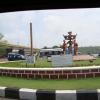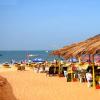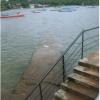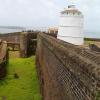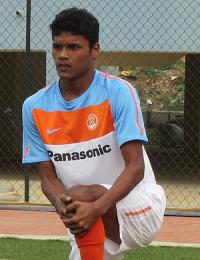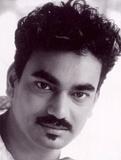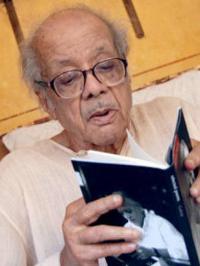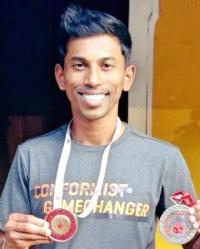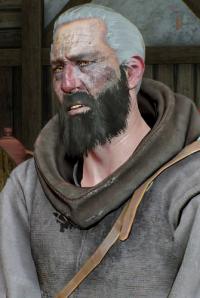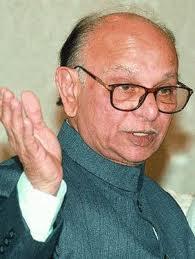Goa is an Indian state situated in the western part of India. This is the smallest state by area and the fourth smallest state by population. The capital of Goa is Panaji. The GDP per capita of Goa is the highest in India and so this is the richest Indian state. The largest city in the state is Vasco Da Gama. Goa has many names such as Gopakapattam, Gopakapuri, Govapuri, Govem and Gomanchala.
History of Goa
The history of Goa starts from Mesolithic age. It was ruled by King Ashoka of Mauryan Empire in 200 B.C. Many dynasties such as Chutus, Satavahanas, Western Kshatrapas, Abhiras, Bhojas, Chalukyas, Kadambas and Konkan Mauryas ruled Goa. In 1312, Goa came under the rule of Delhi Sultanate. Portuguese settled down here in 1510 at Velha Goa. In 1843, Panjim became its capital.
When India got its independence, Portugal was not ready to give away Goa. Operation Viajy was conducted on 19th December 1961 and Goa and Daman and Diu were made as the Union Territories of India. On 30th May 1987, Goa was made as the state of India.
Geography and Climate of Goa
Goa spreads over an area of 3702 square kilometers. It has Maharashtra in the north, Karnataka in east and south and Arabian Sea in the west. The rivers that flow through Goa are Zuari, Mandovi, Terekhol, Chapora and Sal. These rivers have a total navigable length of 253 kilometers.
Goa has a tropical monsoon climate which is hot and humid most of the year. May is the hottest month in which the climate goes as much as 35 degree Celsius. During winters, the temperature of Goa at night is 21 degree Celsius and that at day time is 28 degree Celsius. June, July and August are the monsoon seasons and the average annual rainfall of Goa is 2926 mm.
Natural Resources of Goa
About 1424 square kilometers of Goa is covered by equatorial forests. Some of the forest products are bamboo, chiller barks and Maratha barks. There are more than 1512 species of plants and more than 275 species of birds and 48 species of animals in Goa. Some of the crops grown here are rice, pulses, ragi, coconut, cashewnuts, arecanuts, sugarcane, pineapple, mangos and bananas.
Some of the animals found here are foxes, wild boars, kingfishers, mynas, parrots, crabs, lobsters, shrimps, catfish, oysters, etc. More than 33% of the total area of Goa is under forests. There are many wildlife sanctuaries also located here namely Bondla Wildlife Sanctuary, Molem Wildlife Sanctuary, Cotigao Wildlife Sanctuary, Madei Wildlife Sanctuary, Netravali Wildlife Sanctuary, Mahaveer Wildlife Sanctuary and Salim Ali Bird Sanctuary.
Goa State Map With Districts
Goa has two districts as of June 2012 each governed by a district collector and they are further subdivided into subdivisions.

List of Districts of Goa
|
District |
Headquarters |
Subdivisions |
State Animal – Gaur
State Bird – Ruby Throated Yellow Bulbul
State Tree – Asan
People and Culture of Goa
Goa has a total population of 1,457,723 people with a density of 390 people per square kilometer as of 2011 census. The native people of Goa are called Goan. This is the fourth smallest state in its population. Konkani in Devanagari script is the official language of Goa. Marathi language and Portuguese language are also extensively used. About 61% of people speak Konkani and 21% of people speak Marathi, 5% of people speak Hindi and 4% of people speak Urdu.
Important festival celebrated in Goa are Chavoth, Diwali, Christmas, Easter, Shigmo, Samvatsar Padvo, Dasara, Goan Carnival and New Year celebration. Natak, Bhajan and Kirtan are the traditional dance and music of the Goan Hindus. Rice and fish are the regular food varieties of Goan cuisine. Coconut, coconut oil, chilli peppers, spices and vinegars are extensively used in cooking. Bebnica, alcoholic beverages cashew feni and coconut feni are the traditional foods of Goans.
Education and Sports in Goa
The literacy rate of Goa is the third highest in India with 87% among which the male literacy rate is 90% and female literacy rate is 84%. The schools of Goa come under the Goa Board of Secondary and Higher Secondary Education. There are some ICSE and NIOS schools also. All the colleges of Goa are affiliated to Goa University. Some of the important educational institutions in Goa are Goa Medical College, BITS Pilani Goa Campus, National Institute of Oceanography, Goa Institute of Management, etc.
Football is the popular sport in Goa and there are many football clubs here namely Dempo, Churchill Brothers, Vasco Sports Club, Sporting Clube de Goa, etc. The state also has its own cricket team.
Economy of Goa

The GSDP in 2007 was $3 billion. The major industry in Goa is tourism. 12% of all foreign tourists visit Goa. The second largest industry that contributes to the economy of the state is mining industry. The ores of iron, bauxite, manganese, limestone and silica are mined here. Fishing industry thrives well here and more than 40,000 people are employed in that. Other medium scale industries in Goa are footwear, tyres, fertilizers, pesticides, pharmaceuticals, steel rolling, fruits, fish canning, brewery products, etc. There are 16 planned special economic zones in Goa that bring tax revenues to the state.
Goa Transport
There is airport in Goa called Dabolim Airport. This is a domestic and international airport and the airlines such as Air Arabia, Indian Airlines, Kingfisher Airlines, Go Air, SpiceJet, Jet Airways, Qatar Airways and Monarch Airlines operate their carriers here.
Two national highways, NH 4 and NH 17 run through Goa for about 224 kilometers. It also has 232 kilometers of state highway and 815 kilometers of district highway. Kadamba Transport Corporation operates buses in major routes. Motocycle taxi is a unique form of transport seen in Goa. Ferry boats are operated on navigable rivers.
The rail lines of both Konkan Railway and South Western Railway pass through Goa. The Marmagoa harbor transports mineral ore, petroleum and coal. There is also a small port at Panjim.
Goa Tourism
Goa is famous for its beaches and the tourism in Goa is centered on its coastal areas. Two million people visited Goa in 2010 and more than half of them are foreigners. Goa has tourist seasons both in summer and winter. Goa has two World Heritage Sites, the Bom Jesus Basilica and the Churches and Convents of Old Goa. Some of the places of interest in Goa are
1. Goa State Museum
2. Naval Aviation Museum
3. Goa Science Center
4. National Institute of Oceanography
5. Shanta Durga Temple
6. Mangueshi Temple
7. Mahalsa Temple
8. Forts at Tiracol, Chapora, Aguada, Nanus, Mormugao
9. Bom Jesus Basilica



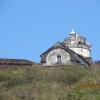

-5692.jpg)
